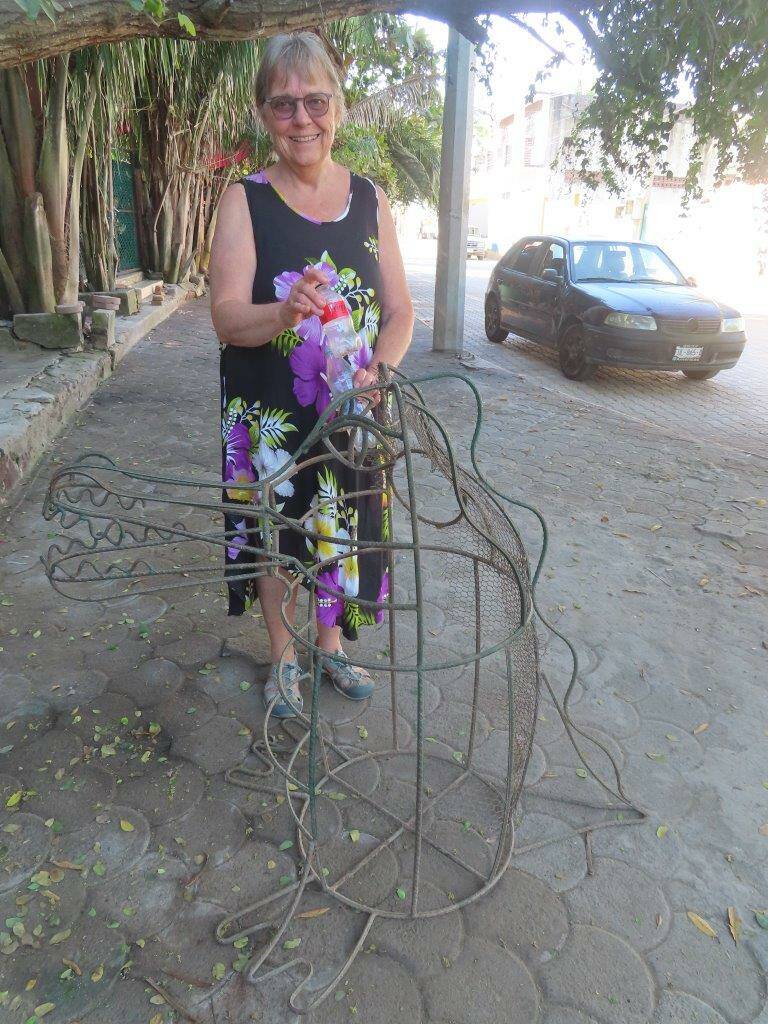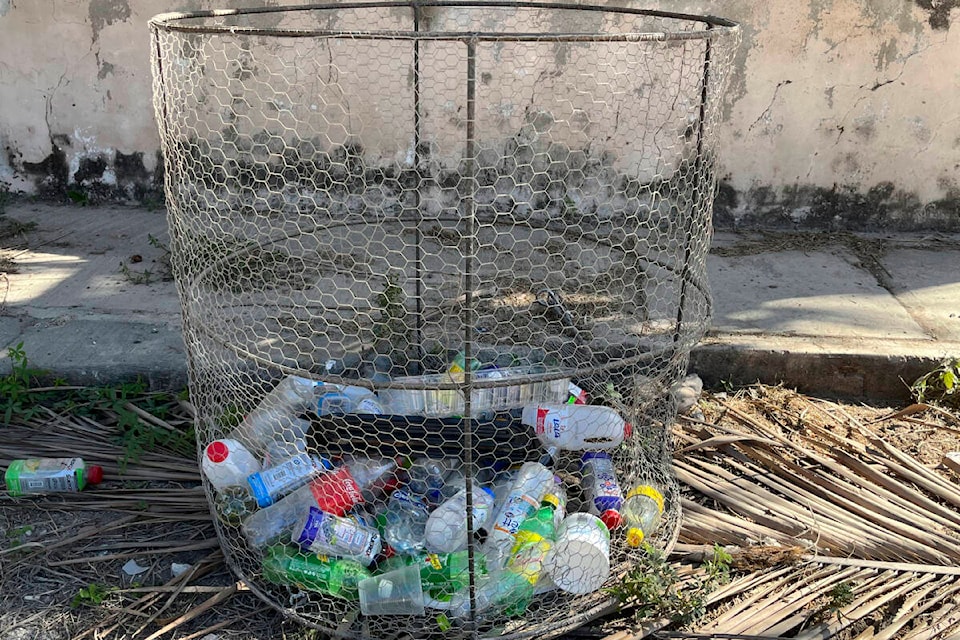by Donna Macdonald
Barking dogs, howling cats, squawking roosters, revving motorcycles – the morning soundscape of the small Mexican town where I just spent two weeks. Above all that, a loud voice and lively music broadcast important information: it’s garbage day.
I thought about how that would not go over well in Nelson. We’re not accustomed to roosters, much less blaring music early in the day, courtesy of city council. I also couldn’t help thinking about all the recyclables and organics in plastic bags heading for the landfill. Street-side metal baskets, where plastic bottles can be dropped, were the only recycling option I’d seen.
I expect that town, like Nelson, will find its own ways to reduce and recycle. I remember how long it’s taken to for us to change our habits. Work on waste management, sometimes known as resource recovery, was a major focus for me while on city council and the regional district. Small, slow steps.
The first step happened in 1972, when the late Mike Jessen was instrumental in starting a recycling program near the current Lakeside Depot. That ended in flames when the mayor ordered the bales of cardboard stored on site to be burned, apparently fearing Halloween vandalism. Mike didn’t give up. Eventually he served for nine years as recycling co-ordinator for the regional district. You may remember the depot he managed in the 1990s on Front Street. It was a gloomy and crowded space, but it served.
At the same time, the user-pay philosophy was gaining momentum, and in the early 90s the city launched the Tag-a-Bag program to encourage waste reduction. One bag of garbage was free; the rest had to be tagged at $2 each.
The mayor at the time, Gerald Rotering, and I decided to follow the garbage truck around one day, to see what was being tossed in the bins. It wasn’t too encouraging; we saw lots of recyclables. A memorable moment was when we peered into the Chamber of Commerce’s bin. Ironically, inside were dozens of business magazines with a cover story proclaiming “Recycling is Big Business!” We were also accused of being communists by a business owner for snooping in her garbage. You just have to smile, and carry on.
Efforts continued throughout the 90s to move to some form of curbside collection of recyclables. It was challenging because the city and regional district have a complicated relationship on waste management; some aspects are regional, some are city only, and both parties agree it’s never fair.
A lot happened in the early 2000s. The Tag-a-Bag program was not being enforced as I realized when I asked about tag sales. I was told 5,000 tags had been sold the previous year. That’s an average of just one or two bags of garbage per year per household.
Council introduced the Pay-as-You-Throw program in 2003, requiring a tag for every bag of garbage. The tag fees cover the cost of disposal at the regional district’s landfill. Residents also pay an annual fee (not tax) to cover the cost of collection from our homes.
In 2004, a labour dispute between the city and CUPE resulted in garbage collection moving to every two weeks. A reduction in waste going to the landfill was documented, and council decided to stick with biweekly collection. Almost 20 years later, this remains a touchy topic.
The concept of Zero Waste became popular at that time. That meant a goal of zero waste to the landfill. The city did a Zero Waste Action Plan in 2003 and began implementation in mid-2004. Now we had a focus and commitment. Finally, in 2008 blue bag curbside collection began.
The final, and important, piece was organics. That has taken much longer to sort out, and Nelson’s approach is innovative. I, for one, look forward to receiving my food waste dehydrator. I also look forward to another sunny trip to see how the Mexican village proceeds!
Donna Macdonald has lived in Nelson since 1972, and is the author of Surviving City Hall, a memoir of her 19 years on Nelson City Council. Her column will appear monthly.

